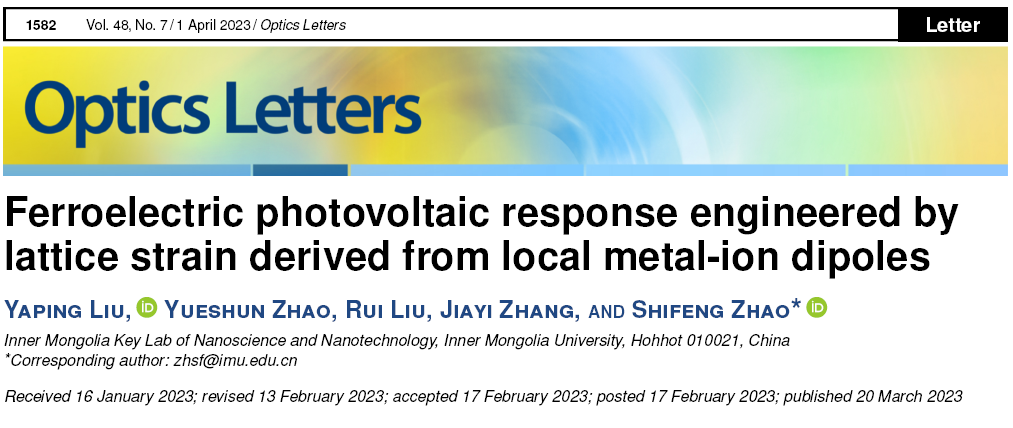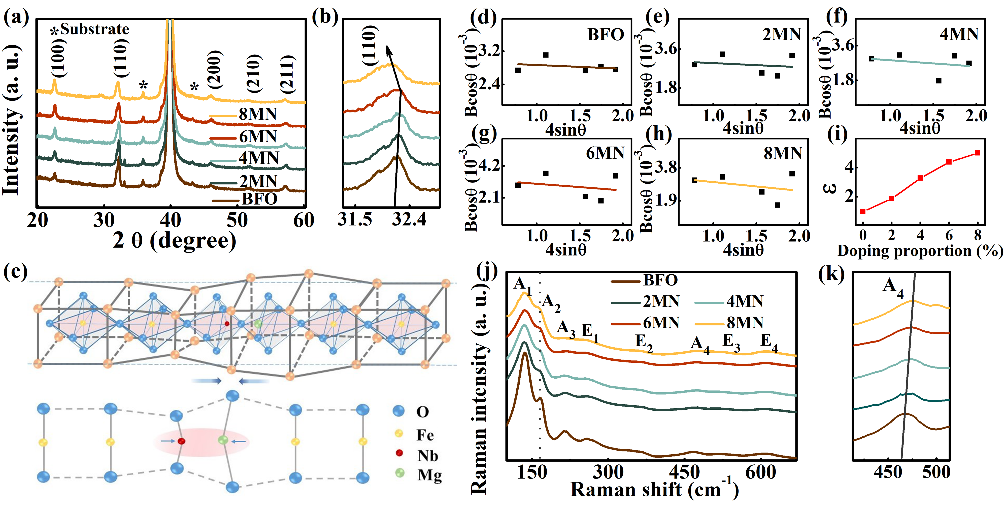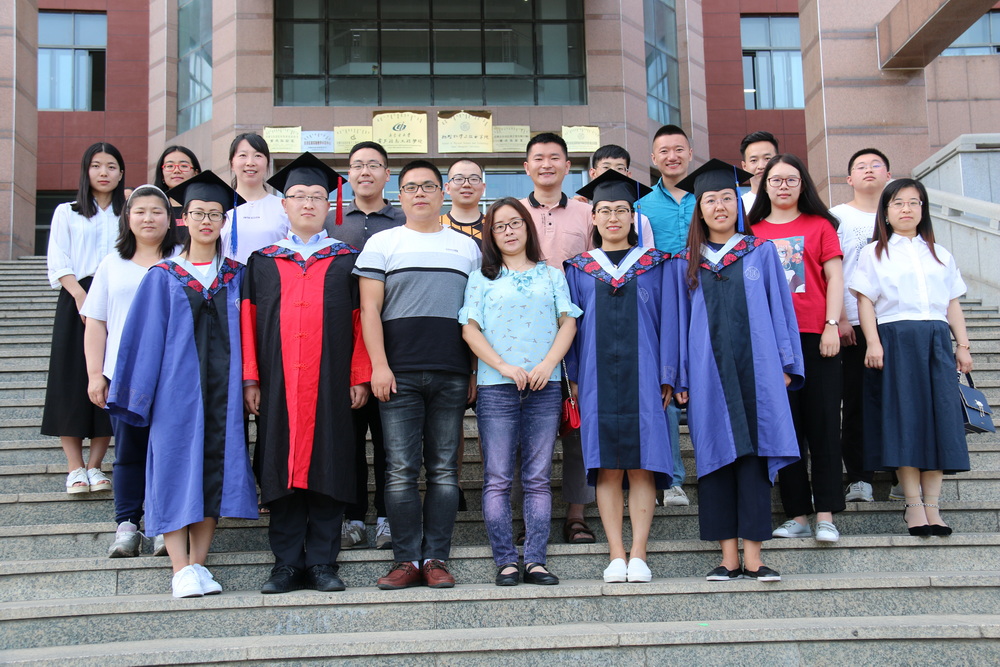Recently the project team of Prof. Zhao Shifeng from the School of Physical Science and Technology of IMU make new progress in the field of the photovoltaic conversion of ferroelectric materials, whose achievement of studies, a thesis titled Ferroelectric Photovoltaic Response Engineering by Lattice Strain Derived from Local Metal Ion Dipoles is published in Optics Letters, a top-class international journal in the field of optics (URL for the thesis: https://doi.org/10.1364/OL.485829). A renowned international journal in physical-optical science started by the Optical Society of America in 1977, the journal is the most representative, most recognized and a highly prestigious internationally authoritative journal in the field of optics covering themes of studies of all the fields of optical science. This is the first time for IMU and Inner Mongolia Autonomous Region to publish a thesis in this journal as its first organization of completion.

Fig. 1 The first page of the thesis
Against the backdrop of global energy crisis and environmental pollution, the utilization of luminous energy--a zero carbon energy, injects impetus pf long-term development of the clean energy industry. At present the conventional PN junction solar energy cells which rely on interfacial effect to separate photo-generated carriers have reached the bottleneck in the efficiency of photovoltaic conversion. As a result, the ferroelectric materials with bulk effects have become hot spots in the exploration of photovoltaic conversion.
The project proposes a lattice contingency engineering strategy where (Mg2/3Nb1/3)3+ionic groups are introduced into the BiFeO3 lattice to break up the balance among ferroelectricity, band gap and electric leakage under normal conditions and achieve effective regulation of photovoltaic energy through the creation of local metallic ionic dipoles.

Fig. 2: Diagram of the structural surface features of thin films and structure of local metallic ionic dipoles
The results show that through lattice contingency engineering, BiFe0.94 (Mg2/3Nb1/3) 0.06O3 thin films acquire excellent open circuit voltage and short-circuit current with more than 20-fold photovoltaic current response compared with pure BFO thin films and outstanding photovoltaic performance, providing new insights for improving ferrroelectric photovoltaic performance.

Fig 3: Photovoltaic performance of thin films
The thesis has Liu Yaping, doctoral candidate enrolled in 2022 as the first author, Prof. Zhao Shifeng as the correspondent author and IMU as the sole organization of completion. The project is sponsored by the Program for General Projects of the National Natural Science Foundation of China, Program for Key Projects of the Natural Science Foundation of Inner Mongolia, Program for the Development of Innovation Teams of Universities and Colleges in Inner Mongolia Autonomous Region and Program for Innovation Teams of Grassland Talents of Inner Mongolia Autonomous Region.

Project team of Prof. Zhao Shifeng
A brief introduction to the main authors: Liu Yaping, doctoral candidate in physics enrolled in 2022, specializing in studies of lattice dynamics of ferroelectric photovoltaic effect, first author of two academic theses in Applied Physics Letter, a first-class journal in applied physics and Optics Letters, a first-class journal in optics, winner of President Scholarship of IMU and Award for Excellent Theses for Master’s Degree; Zhao Shifeng, professor and Ph.D Supervisor from the School of Physical Science and Technology of IMU, correspondent author of more than 120 academic theses in internationally renowned journals, holder of 15 invention patents, in charge of 6 national level projects under the 973 Program and General Projects of the National Foundation, 6 provincial level key projects of the Natural Science Foundation of Inner Mongolia and Excellent Youth Program, awarded Second Prize for Natural Science of Inner Mongolia Autonomous Region, Prize for First Young Innovative Talents of Inner Mongolia Autonomous Region and Prize for Youth Science and Technology of Inner Mongolia Autonomous Region, selected for the Grassland Talents of Inner Mongolia Autonomous Region, First Tier of 321 Talents of the New Century and Young Talents in Science and Technology of Inner Mongolia Autonomous Region, leader of the Project of Rare Earth Micro-nanometer Functional Materials and Components of the Innovation Team of the Grassland Talents of Inner Mongolia Autonomous Region and the Project of Dielectric and Solid-state Refrigeration of the Innovation Team of Universities and Colleges of Inner Mongolia Autonomous Region.

